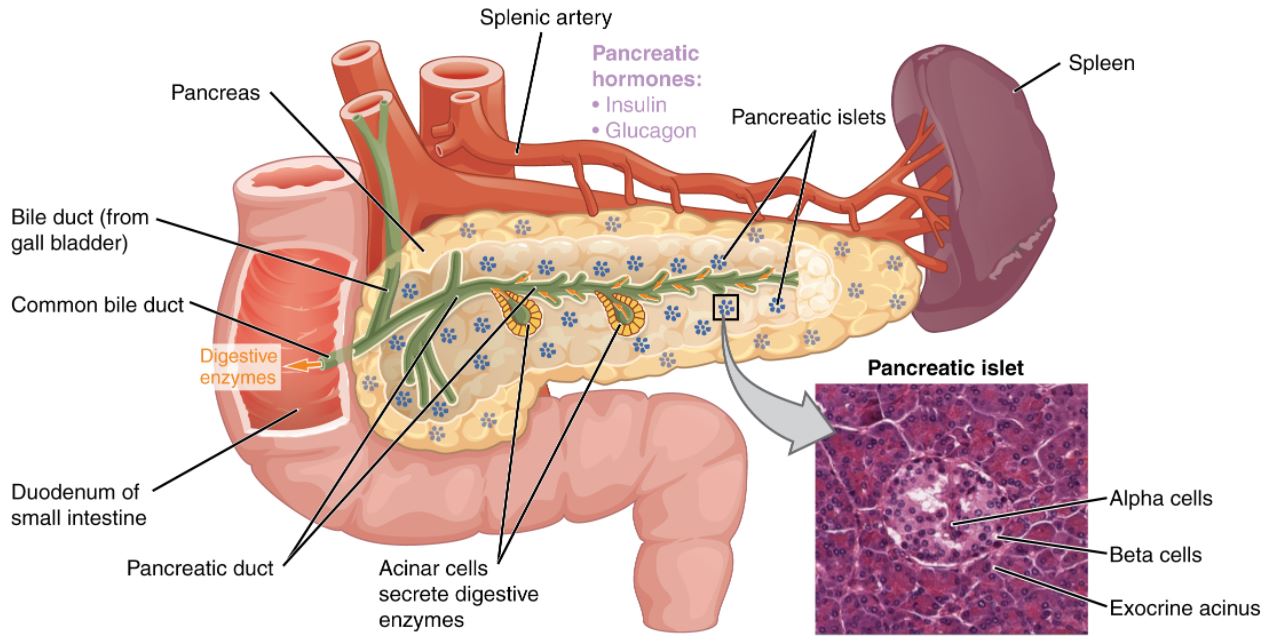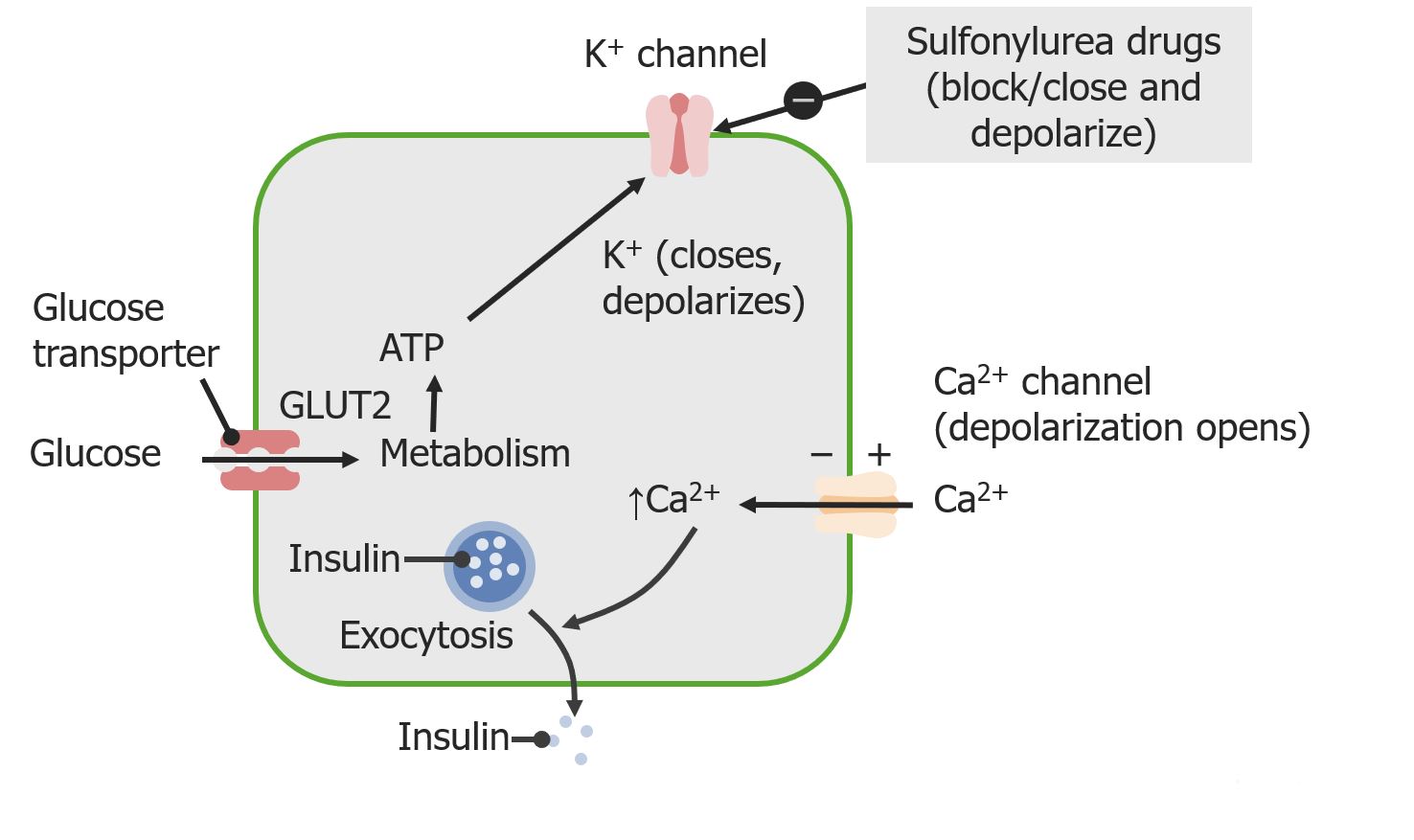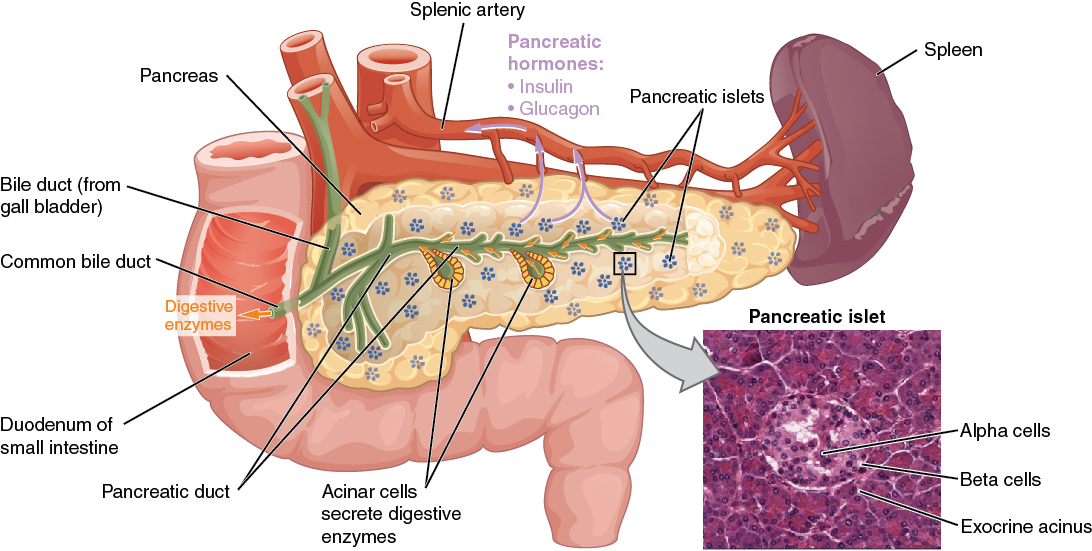Playlist
Show Playlist
Hide Playlist
Secondary Diabetes Mellitus – Hyperglycemia
-
Slides HyperglycemiaDiabetesMellitus EndocrinePathology.pdf
-
Reference List Pathology.pdf
-
Download Lecture Overview
00:01 Secondary, what does this mean to you? You’re developing hyperglycemia due to other endocrinopathies. 00:10 What does Cushing’s mean to you? Too much cortisol. 00:13 What is that going to do? It’s going to increase gluconeogenesis and it will then impair peripheral utilization resulting in hyperglycemia. 00:23 What’s the hormone in acromegaly? A growth hormone. 00:26 What does that do? It brings about anti-insulin like effect, decreased peripheral utilization. 00:34 What if you had a patient that has MEN type I and has prolactinoma, has hypercalcemia and also has… have the skin issues maybe down in the legs and such known as necrolytic migratory erythema, a glucagonoma. 00:49 All of these are hyperglycemic secondary type, there was an underlying issue that resulted in secondary diabetes mellitus. 01:00 Down syndrome is a big one, genetically that you want to keep in mind… trisomy 21. 01:06 Hemochromatosis… now, completely all the different organs that are commonly affected in hemochromatosis - pancreas obviously; number two skin, bronzing; number three liver, fibrosis… gone. 01:25 Patient may die of heart disease… hemochromatosis. 01:29 Topic here, however, secondary diabetes mellitus being caused by hemochromatosis. 01:37 Chronic pancreatitis, pancreatic carcinoma… Earlier we had a discussion of pancreatic islet cell tumours. 01:48 Is that what this is? No. 01:51 So, when you do pancreas, forever more you divide it into endocrine and exocrine… endocrine, exocrine. 01:59 You divide it so that you can understand the physiologic aspects of endocrine-exocrine. 02:04 You divide this so that you understand the pathologic effects. 02:07 Now, granted we’re doing endocrine pathology, but if your patient, for example, you know of Steve Jobs. 02:15 He died of pancreatic cancer. 02:17 He died however of pancreatic adenocarcinoma. 02:22 When we did our islet cell tumours of the pancreas, what were they again? Insulinoma, glucagonoma, VIPoma, somatostatinoma… completely different discussion. 02:33 This is pancreatic adenocarcinoma, this is the one that you know and which we have our tumour marker called CA 19-9. 02:42 You know about the molecular mechanism called KRAS? Ah, are bells ringing? I hope so. 02:49 In diabetes mellitus could be a presenting sign because of extensive pancreatic damage in pancreatic adenocarcinoma. 02:57 In gestational diabetes, now initially, gestational pregnancy, there’s going to be a hormone that the placenta releases. 03:07 It’s called human placental lactogen. 03:11 That human placental lactogen works like your growth hormone, it decreases the peripheral utilization of glucose. 03:16 Therefore, there should be high levels of glucose during pregnancy in the mother, no doubt. 03:23 That glucose from the maternal circulation is passing through the placenta to the foetus, therefore the baby’s growing… the foetus is growing. 03:33 Now, you’re in third trimester… third trimester and you find hyperglycemia in your pregnant woman in addition ultrasound of the pregnant woman shows a large foetus, why? Macrosomia, why? Because now the mother, the pregnant woman has all these glucose that’s being constantly fed, fed, fed, fed, fed to the foetus. 04:01 May I ask a question? Is the foetus capable of producing its own insulin? Oh, absolutely. 04:08 What kind of hormone is the insulin, anabolic or catabolic? Why does an athlete perhaps take insulin or glucagon? Anabolic, right? All that anabolism taking place in the foetus… macrosomia. 04:23 Now, this is the problem, if that hyperglycemia continues in the pregnant woman, the delivery of the child takes place and that’s not our discussion right now, but that will be another discussion later. 04:38 But, understand that with gestational diabetes mellitus, it predisposes that mother to type II diabetes years down the road. 04:50 Increased birth weight, associated hyaline membrane disease. 04:53 We don’t really call it this anymore, we call what’s known as neonatal respiratory distress syndrome NRDS, we’ll talk about that later. 05:03 That’s because with all that insulin, that might be present in that foetus that you might be releasing… decreasing the cortisol and therefore, the lecithin which is a surfactant is not being produced properly, may result in NRDS. 05:20 You need to put things together here, these are not just bullet points. 05:24 A lot of important things going on. 05:26 The infant that’s being born here with all that insulin, wow, the number one step that you’re worried about is with all that insulin that just… that newborn just came out of the vaginal canal is going to suffer from hypoglycemia especially when you cut off the umbilical cord because now the glucose is no longer being fed to the foetus or the newborn and with all that insulin that the newborn has, you’re worried about hypoglycemia in that newborn called rebound effect… big time. 05:59 Very important section here with gestational diabetes, we will revisit all these, don’t worry. 06:05 A few times in pulmonology, we’ve seen it and in female reproductive pathology.
About the Lecture
The lecture Secondary Diabetes Mellitus – Hyperglycemia by Carlo Raj, MD is from the course Pancreatic Disease and Diabetes.
Included Quiz Questions
What is NOT a cause of secondary diabetes?
- Addison Disease
- Acromegaly
- Glucagonoma
- Cushing Syndrome
- Down Syndrome
What cause of secondary diabetes is characterized by iron deposition in tissues?
- Hemochromatosis
- Cushing syndrome
- Chronic pancreatitis
- Acromegaly
- Down syndrome
What is NOT a characteristic of gestational diabetes?
- Decreased risk of birth complications
- Increased predisposition to type II DM
- Increased birth weight of the baby
- Associated with hyaline membrane disease
- Increase insulin level in a child being born hypoglycemic
What is a common complication of gestational diabetes?
- Increased birth weight
- Increased appetite
- Decreased potassium
- Thyromegaly
- Tinnitus
Customer reviews
5,0 of 5 stars
| 5 Stars |
|
5 |
| 4 Stars |
|
0 |
| 3 Stars |
|
0 |
| 2 Stars |
|
0 |
| 1 Star |
|
0 |








